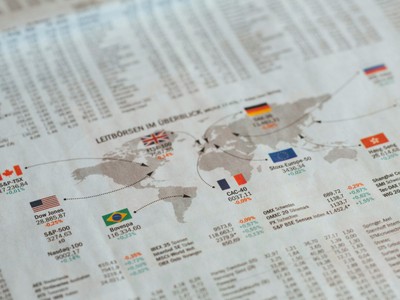The sell-off was caused initially by US employment data showing an increase in wage inflation, which prompted expectations that the Federal Reserve will raise interest rates quicker than they had previously been signalled. Rising interest rates mean that companies’ profits are impacted by a higher cost of borrowing, while individuals spend less and save more as inflation bites. Traders therefore reacted to the data by selling off Treasury bonds and subsequently equities, locking in profits after a long run of rising share prices.
However, this pullback in markets was anticipated, so why was the market reaction so severe? One simple reason is that the S&P had not had a single day’s fall of more than 1% since August 2017, and was up 40% since the 2016 election and more than 7% in January alone. After such a long winning streak, inevitably the correction would be sharp. But it also appears that the sell-off was exacerbated by a type of financial instrument that had been designed to benefit from the subdued volatility the market had been experiencing. Banks had created a type of exchange-traded note (‘ETN’) that was designed to produce the opposite returns of the VIX (an index that measures market volatility), thereby allowing holders to profit from decreasing volatility. But when the US markets sold off in response to the employment data, the VIX spiked and the holders of these instruments were faced with large losses. To cover these losses they were forced to sell other assets, causing further volatility that meant the ETNs fell further in value, increasing the holders’ losses and so on.
How much these ‘volatility strategies’ were the cause of the extent of the market’s fall can be debated. But it called to mind the collapse of Long-Term Capital Management (as detailed by Roger Lowenstein in ‘When Genius Failed’). The hedge fund boasted a mix of star bond traders and leading academics, including two future winners of the Noble Prize for economics, on its payroll. The firm used complex quantitative models to exploit minuscule arbitrage opportunities, but with the stellar reputations of those involved with the firm, Wall St fell over itself to extend the enormous amount of leverage required to make profits from its trading strategies. However, following the Russian default in 1998 the strategy began to rack up losses so great that a $3.3bn bailout was organized by the New York Federal Reserve to prevent the collapse from triggering a global financial crisis.
Although extreme, the story serves as a reminder of the impact that increasingly complex and opaque financial instruments can have on the wider market. The amounts at risk last week were not large enough to put any bank at risk, but they still did exaggerate the losses suffered by other market participants. The rise of high frequency traders, computer-driven strategies, passive tracker funds, may or may not prove to be threats to market stability, but it is likely that they will increase levels of volatility. In which case, as an investor, one needs to look beyond the short term and, by focussing on fundamentals, have confidence that your investments will withstand a downturn and recover strongly on the other side.
Cranley Macfarlane, Investment Manager



